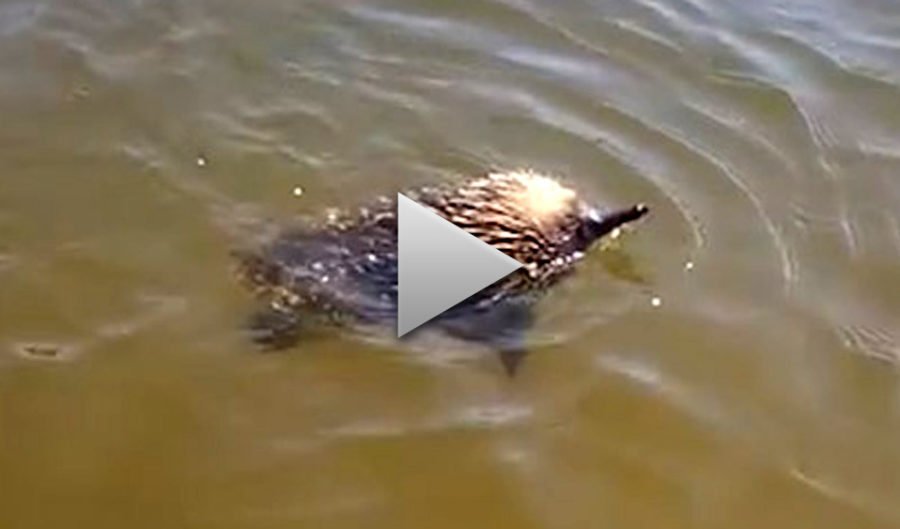Why do echidnas swim?

IT MAY COME AS a surprise to some that echidnas can often be found floating along streams of water, but why exactly they take a dip, or more appropriately — a dunk, is hotly debated.
Peggy Rismiller, an expert on echidnas for almost 30 years and a director at the Pelican Lagoon Research and Wildlife Centre (PLRWC), which she co-owns with her partner and fellow scientist Mike McKelvey, explained that echidnas may take a swim for leisurely purposes.
“Sometimes they are just having fun. Yes, we do see ‘play’ in echidnas. They have been around for 110 million years and there is nothing new under the sun.”
The PLRWC, situated on the eastern end of Kangaroo Island in South Australia, gets its fair share of concerned onlookers.
“Through our many years of collecting echidna sightings from around Australia, we have multiple records from various places along the Great Ocean Road of swimming echidnas. There are stories about people ‘rescuing’ swimming echidnas only to have them head straight back out into the water,” Peggy explained.
“I often get reports from locals who see echidnas swimming across their dams, when it could have easily walked around. Working at the west end of Kangaroo Island we have often seen echidnas swimming across the Rocky River. It’s all part of their home range.”
There’s also a chance that the echidnas take a dip when the Australian climate becomes a little too much for them. “They could be cooling off on a hot day,” Peggy said, while also suggesting that they may use a paddle in the water to groom themselves.
Some scientific studies have suggested that there is a strong possibility that echidnas evolved from platypuses. The strongest evidence to support this theory is that echidnas have electroreception, giving them the ability to detect electric currents. This particular biological trait is mostly seen in aquatic animals.
While the Australian echidna only has 400 electroreceptors, compared to the platypuses 40, 000 — and that’s just in the tip of their bills, they’re nonetheless quite at home in the water.
READ MORE:

